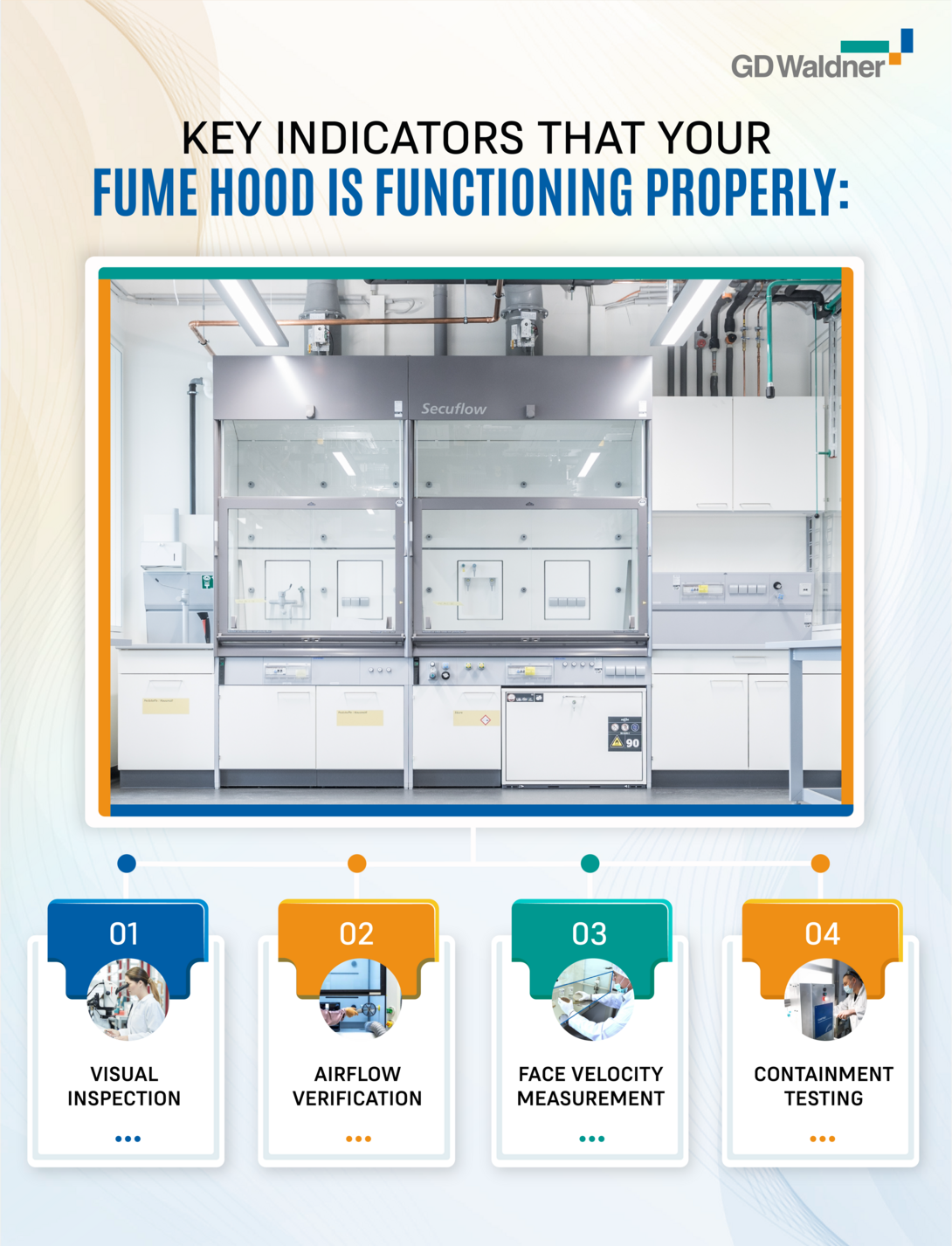A properly functioning fume hood is essential for laboratory safety and as you probably know, fume hoods are designed to protect us from harmful gases, vapours, and particles that can be generated during experiments. They create a controlled airflow, ensuring that any hazardous substances are safely contained and vented out of the lab. That’s why it’s absolutely crucial to regularly test if your fume hood is doing its job effectively. The only way to know if your fume hood is containing is to have it tested. Fume hood performance is as much about the room conditions as it is about the actual hood.
Here are a few key indicators that your fume hood is functioning properly:
1. Visual Inspection: Start by giving your fume hood a good visual once-over. Check for any signs of damage, such as cracks in the glass or leaks around the edges. Make sure the sash (the movable transparent panel) is fully functional and operates smoothly. Also, make sure that nothing has been removed such as the airfoil.
2. Airflow Verification: The primary function of a fume hood is to provide an inward airflow at the front opening smoothly towards the baffles. Using a low-velocity haze machine, you can visualize turbulence or escape into the laboratory. The smoother the airflow the better the containment.
3. Face Velocity Measurement: Face velocity refers to the speed at which air moves through the front opening of the fume hood. It plays a crucial role in maintaining proper containment. Use an anemometer to measure the face velocity at various points across the opening in what is called a face
velocity profile. The velocity should fall within the recommended range specified by the manufacturer or relevant safety guidelines. But remember there is no direct relationship between face velocity and containment. If it falls outside the acceptable range, contact your lab safety officer or facilities team for assistance.
4. Containment Testing: A fume hood function is to capture, contain, dilute and exhaust. Since the primary function of the hood is containment, any loss of containment means the hood is not performing safely. The only way to know if your hood is performing safely is to have it tested. The two most common methods involve the use Tri-Color Airflow Visualization or SF6 (sulfur hexafluoride)
Don't forget that maintaining and conducting routine checks on your fume hood is crucial to ensure its proper functionality. Always refer to the manufacturer's guidelines and safety protocols specific to your fume hood model. If you have any uncertainties or concerns, feel free to seek guidance from your lab supervisor or safety officer. Safety first!

